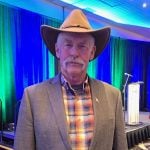A southern Alberta farmer who depends on irrigation says life in his
part of the province revolves around water.
“It is, outside the economic viability issue, the number one issue,”
said John Kolk, who farms with his brother Leighton near Picture Butte,
where they run a feedlot, poultry operation and grain farm.
Life on Kolk Farms is a balancing act, where they worry about water
quantity and quality.
Last year a new era started when water licences were traded and sold
Read Also

Lending policy still focused on primary producers: Farm Credit Canada
Farm Credit Canada said it has not changed its business practices and remains committed to supporting all producers, after a report from an Ottawa-based media outlet claimed otherwise.
within irrigation districts to ensure there was enough moisture for
thirsty crops in the worst drought in 130 years. The next step could be
pricing water as a commodity.
“The transition to water pricing is very threatening to me as a farmer
and an irrigation user,” Kolk said.
“It is hard to put the price of water for forages up against water for
use in the gas and oil process. We’re not going to win that process.”
He welcomes a provincial water strategy that is discussing transfers
and more control over a limited resource by licensing withdrawal rights.
“The right to water through licensing will become more and more
important because to make the shift that has to happen, it is almost
inevitable that there will be some form of pricing,” he said.
With another drought looming, he predicts farmers are likely to farm
for crop insurance.
If there is limited water for sugar beets or potatoes, they may switch
to a dryland crop like barley for a better insurance payout.
Kolk said farm families often put their health at risk by using
untreated surface water.
“You’ve got no treatment, very little monitoring and high surface water
use that is a concern,” he said.
If his county builds a water pipeline, Kolk’s farm will hook into it to
get better water.
Improving rural water quality is one of the reasons Kolk became
involved in developing environmental farm plans for Alberta. Adopted
from the Ontario environmental farm plan, it shows farmers their risks
as well as opportunities for improvement. The program should be
available in Alberta by October.
He wants a practical plan and good information for farmers.















